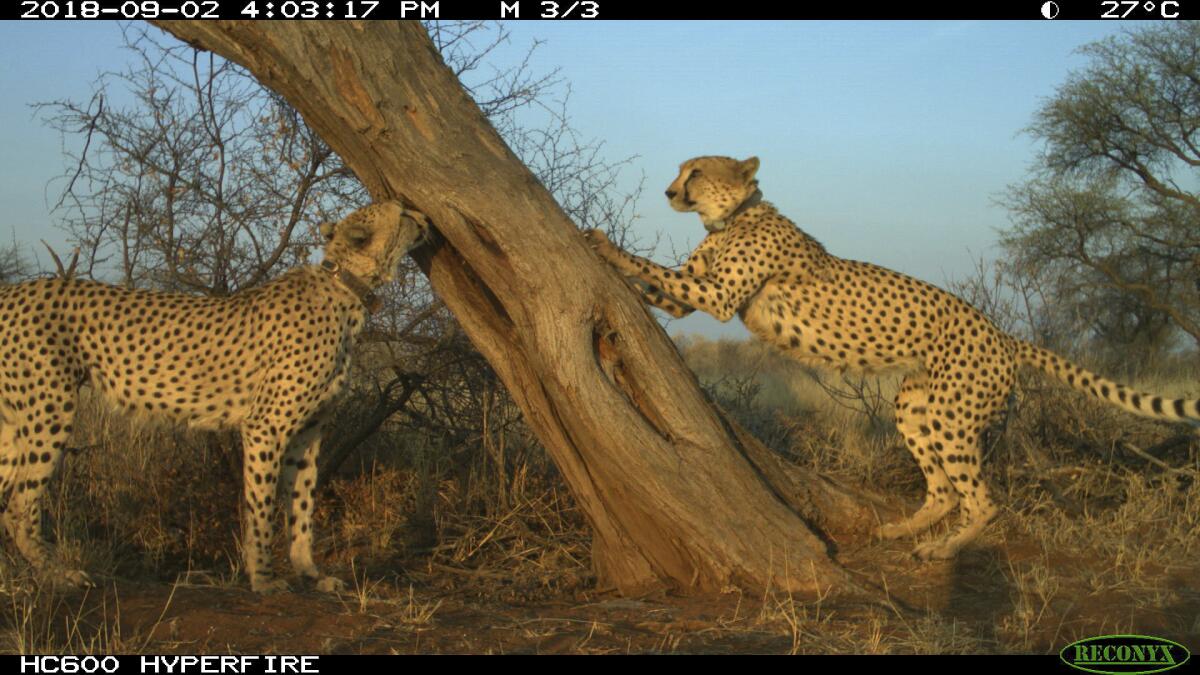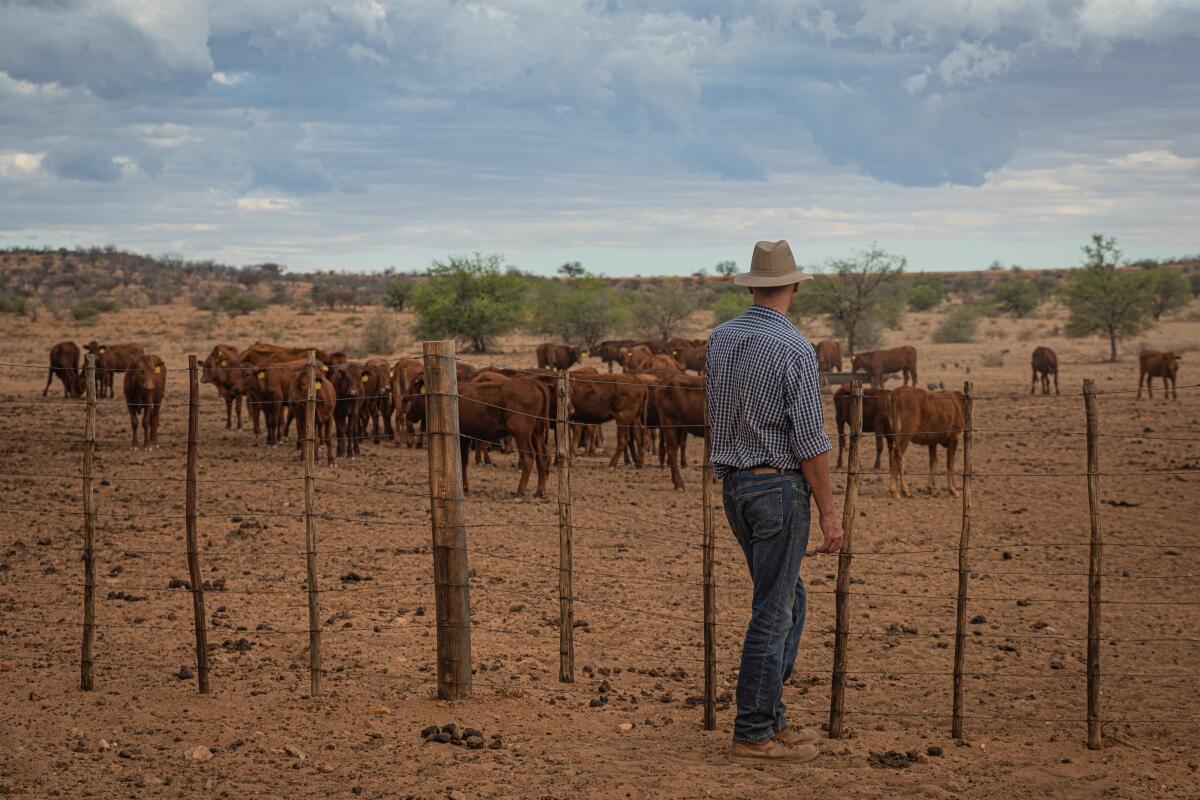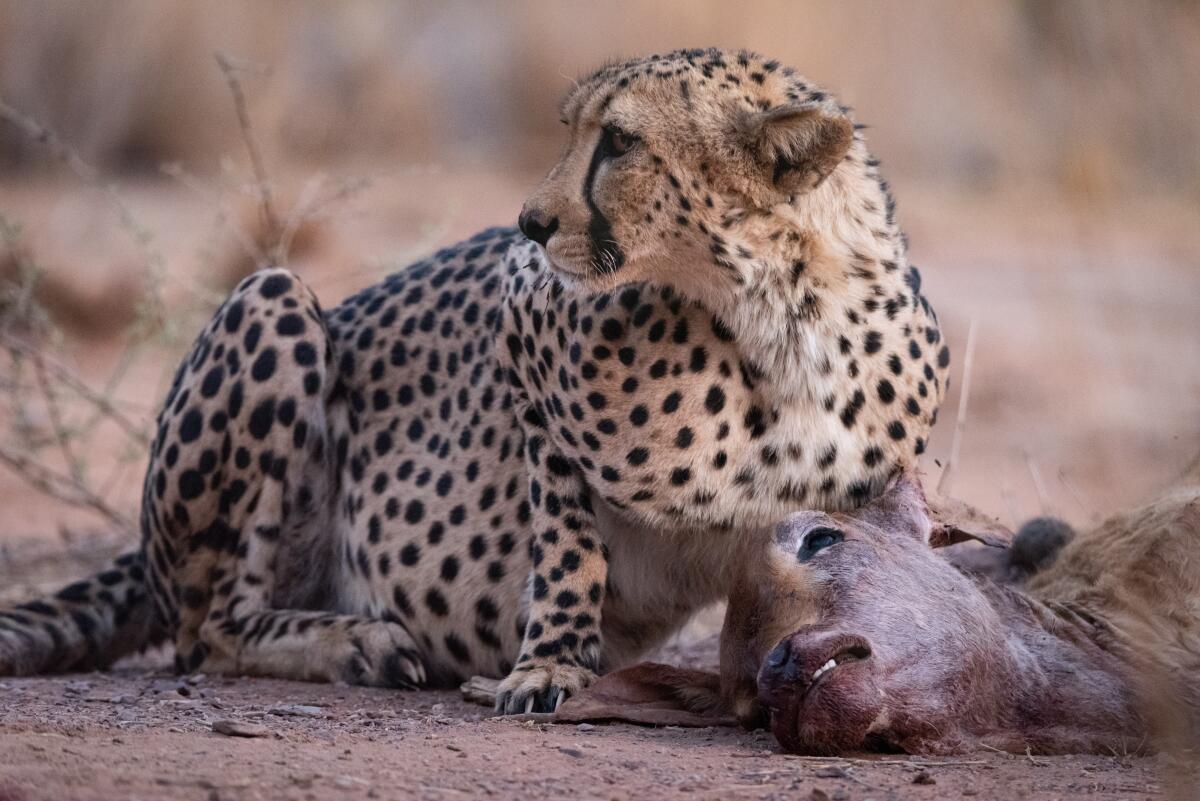Ranchers who avoid cheetah ‘hangouts’ can protect cattle without killing the rare cats

- Share via
On the dusty savannahs of Namibia, one of the last strongholds of cheetah populations on Earth, conflicts between cattle ranchers and big cats threaten the survival of the embattled carnivores.
But new research on how the cats use their terrain has allowed some ranchers to reduce the number of calves killed annually by 86% — largely by avoiding popular cheetah hubs.
The findings, which promise to save the lives of not just calves but the felines as well, were published Monday in the Proceedings of the National Academy of Sciences.
Cheetahs are the fastest land mammal, capable of speeds exceeding 60 miles per hour. But they also hold another distinction: the rarest big cat in Africa, with fewer than 7,000 alive in the wild.
By following the movements of 106 cheetahs wearing GPS collars from 2007 to 2018, researchers from Germany and Slovenia gleaned new insights into cheetah social structure.
Researchers found a chemical related to vehicle tires that is responsible for killing more than half the coho salmon in Puget Sound each year.
Unlike most African felines, cheetahs hunt by day, covering vast distances. Some males team up to hunt and defend territories, but other males and all females lead largely solitary lives.
Even a loose-knit society needs a way and place to communicate. Within core areas of their territories, some male cheetahs leave scent marks by urinating or defecating in prominent locations — typically on trees, termite mounds or rocks. Other cheetahs come to these areas to sniff around and learn who has passed by recently and who may be ready to mate or fight.
“You can think of these landmarks as the most popular bar in town,” said Jörg Melzheimer, an ecologist at the Leibniz Institute for Zoo and Wildlife Research and co-author of the new study. “It’s the main address for all the boys and girls looking for partners to go. It’s a communication hub.”
And these hangouts are enduring. Through interviews with ranchers, Melzheimer learned that some trees marked by cheetahs were also used by cheetahs 80 years ago. “They go back generations and generations,” he said.

Using GPS tracking data that recorded locations every 15 minutes, the researchers calculated that cheetah activity around these hubs is about 20 times higher than elsewhere.
“This is an extraordinary data set demanding a huge amount of work, and the authors have used state-of-the-art statistical methods to analyze the data thoroughly,” said Tim Caro, a biologist at UC Davis who was not involved in the study.
The hub areas are the most dangerous for calves, which are vulnerable to cheetahs during the first six months of their lives.
In 2008, researchers convinced the first rancher to move herds to avoid cheetah hubs during calving season. The team initially wasn’t certain whether the big cats would follow the herds or simply prey more on wildlife, such as grazing oryx, in and around the hubs. The cheetahs went for the wildlife.
As word got out, other ranchers joined the experiment. The scientists collected data on cheetah kills before and after herding routines were changed for six ranches. Other ranchers also changed their routines.
The average number of calves lost to cheetahs each year dropped from 15 to two, the researchers found. The trend held for a decade, indicating that the change wasn’t arbitrary.

The study shows that cheetahs “are only opportunistically targeting livestock, not selecting them,” said Elizabeth Naro, a conservationist at African People & Wildlife, who works on carnivore monitoring in Tanzania and was not involved in the study.
“What the authors found is exciting because it shows that cheetahs rely on activity centers, where predation is simply incidental,” said Christine Wilkinson, a UC Berkeley researcher who studies carnivore conflict in Kenya and was not involved in the study. “The researchers realized the focus should be on ‘problem areas,’ not ‘problem individuals,’ for cheetahs.”
Keeping calves away from cheetah communication hubs can help mitigate conflict with ranchers, said Vincent Van Der Merwe, a biologist at the Endangered Wildlife Trust’s Cheetah Metapopulation Project in South Africa.
“This is not a complete solution, because cheetahs still roam a larger landscape,” added Van Der Merwe, who was not part of the study. “But it can make a big impact.”



